Beginnings of SDN Lois Barker, Waterloo
“It’s really important to work, but you still need to take time out to have fun!”- Lois Barker
SDN Children’s Services begins in 1905
In 1905 a determined group of women from Sydney’s upper classes who understood ‘the difficulties that beset the paths of working mothers’ founded the Sydney Day Nursery Association. The Association aimed to improve the welfare of children whose mothers were facing poverty and had to work to provide for their family. Infant mortality was high and the Kindergarten Union was only able to provide daycare services for a few hours a day. With no other option, these young children were often left to fend for themselves among the streets of working class Sydney.
In response, the Association opened its first Day Nursery in a terrace house in Dowling Street, Woolloomooloo in 1905, the first long daycare centre in NSW. For just three pence a day, babies and children were bathed, fed, clothed and cared for from 7.00am to 6.30pm.
Due to overwhelming demand, the Association opened Day Nurseries in five more locations in the inner city soon after. These were all areas of need in Sydney with large working population.
History of Waterloo
The inner-city suburb of Waterloo, a mere 3 kilometres south of Sydney’s CBD, is part of City of Sydney Council. The name Waterloo is derived from the famous Battle of Waterloo in 1815 when allied European forces commanded by the English Duke of Wellington defeated Napoleon’s imperialistic French army.
Being near the heart of the new colony, industry began early at Waterloo. Waterloo Council was established in 1860 and from the last days of the 19th century to the early 20th century, the area saw tremendous growth. Along with rows of workers’ cottages and larger terrace housing, many of which still stand today, the mills and market gardens of the early years gave way to factories.
The traditional owners of Waterloo are the Gadigal people of the Eora nation. Redfern and Waterloo are significant in the modern history of Indigenous Australians. Many Indigenous Australians were drawn to the area in the early 20th century for work and it became a significant centre of population for them until gentrification in recent times pushed many out.
This history, which includes the Block housing area in Redfern, has been the base for much Aboriginal Australian protest including the genesis of Australia’s Black Power Movement.
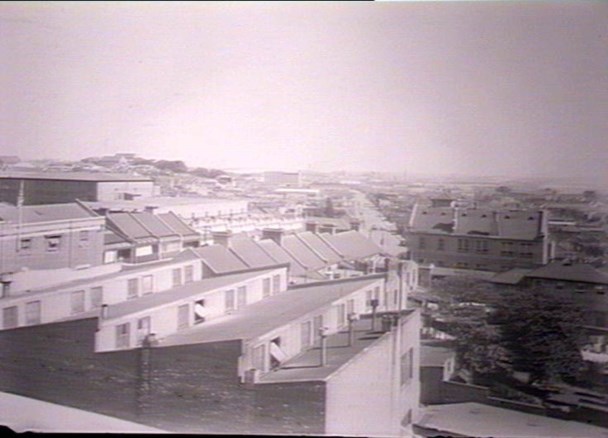
Above: Waterloo seen from Peters Factory (1939). Courtesy State Library of NSW
Who was Lois Barker?
The early childcare and education centre named in honour of Lois Barker began operations in 1983 with its official opening on 5 April 1984 attended by the Sydney Lord Mayor and Lois Barker herself. But who was she?
Lois Shirley Barker was born in Orange on 17 May 1926, and she passed away on 1 December 2007. She studied early childhood education during World War II and then became a preschool teacher in various places around Sydney.
Eventually, she worked for the Kindergarten Union, first as a Director at Waterloo and the University of Sydney and then as an administrator. It was in this latter role where she worked closely with the City of Sydney Council, which resulted in the centre being named in her honour.
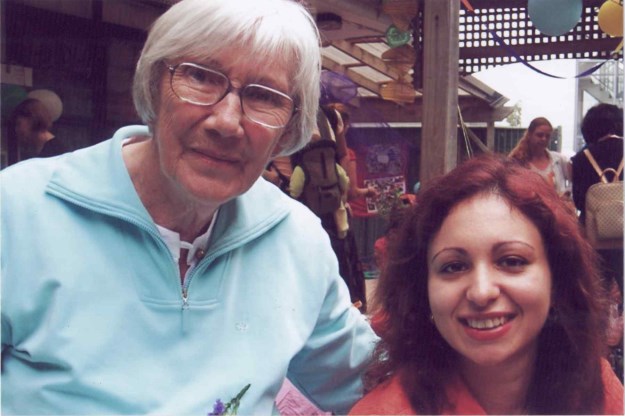
Above: Lois Barker at SDN Lois Barker, Waterloo during SDN centenary celebrations in 2005.
SDN Lois Barker, Waterloo - The Early Years
In August 1982 the City of Sydney Council wrote to the Sydney Day Nursery and Nursery Schools Association (SDN) confirming that they had been successful in winning the contract to run the centre. The letter set out the council’s conditions for running the centre which included the requirement for the council to be consulted on fees for attendance and on staffing. The initial license was for the provision of long day care for 48 weeks a year, from the hours of 7am to 5.30pm.
In 1991 Centre Director Dani Nuthall wrote to parents that “at our centre we have a philosophy that whereby we aim to provide not only a caring, nurturing, safe environment, but also carry out a wide range of other activities beneficial to your child’s growth, welfare and development”.
These included “appropriate first-hand experiences in all areas of learning – play, gross motor and everyday activities - especially focusing on the individual”, “for the child to develop a love for learning”, “to provide an acceptable, stable role model for children during all processes – example: washing, nutrition and general hygiene” and “to have a sense of humor in all circumstances – large and small”.
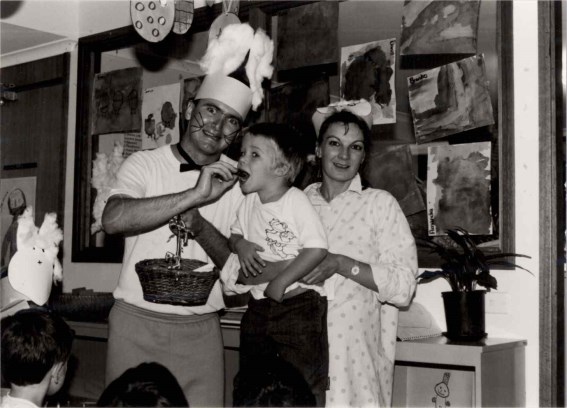
Above: Easter at SDN Lois Barker, Waterloo (1987)
“[Lois Barker’s] philosophy of teaching, bringing up her children or helping anyone was simple. It is easily understood if we consider her gardening. Mum had beautiful gardens in all three of her homes. Each was conceived in its own context. She studied the lie of the land and then placed the plants where she thought they would do well” - Geoff Barker (son of Lois)
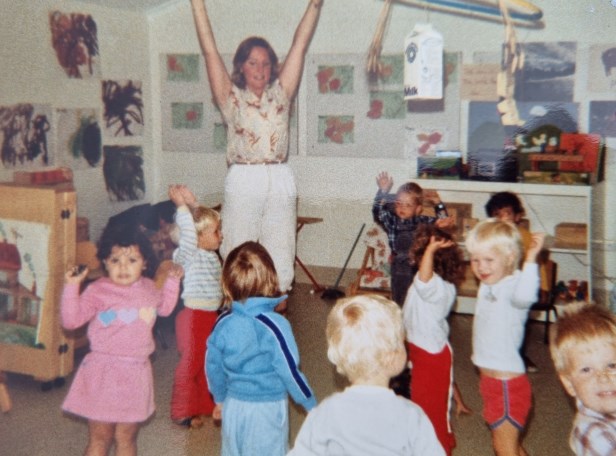
Above: Margret Bell leading the 2’s Group at Lois Barker Child Care Centre, (ca. 1983)
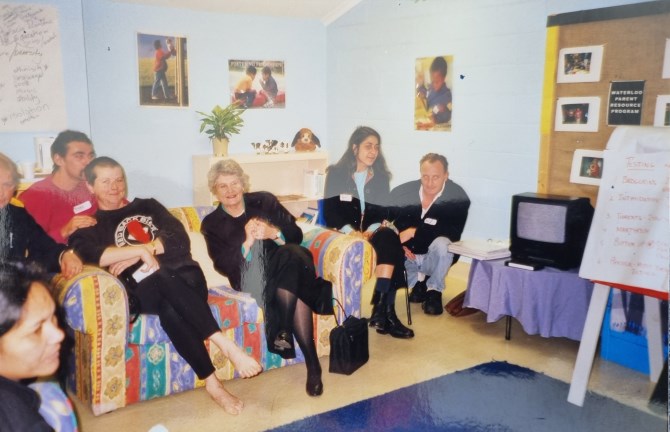
Above: Jocelyn Newman, Federal Minister for Family & Community Services (centre of picture) visiting SDN Lois Barker, Waterloo (2000)
SDN Lois Barker, Waterloo - Today
On 5 April 2014 SDN Lois Barker celebrated its 30th anniversary with a morning tea for children, families and staff. Lois Barker’s son, granddaughter and great-granddaughter also came along to the party.
There is still much to celebrate at SDN Lois Barker today as it approaches its 40-year anniversary. It is a successful centre offering early childhood education and childcare from birth to school age.
In recent times, children at SDN Lois Barker have had the opportunity to explore nature via a worm-filled sensory bin and by placing sweet potatoes in water and marveling at the results. On the latter, the teacher told the children, “These are sweet potatoes, and they can grow in the water. In a few weeks a vine with several stems will begin to sprout. Then we can eat the leaves from the sweet potato, or we can leave them there and watch them grow.”
Autism Specific Program
Building on the expertise of our successful SDN Beranga Autism-Specific Preschool, the program is open to 8 children each day from Tuesday to Friday and takes place in a purposely equipped preschool room within SDN Lois Barker, Waterloo Children’s Education and Care Centre.
The program delivers an autism specific approach focused on that important year before school and the transition from preschool. Our staff design and deliver a highly collaborative and play-based program.
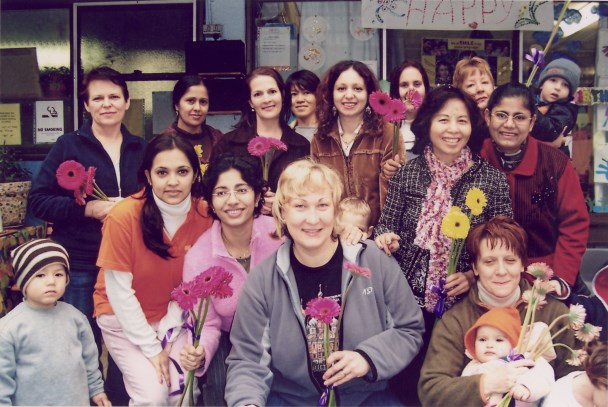
Above: Teacher’s Day celebrations at SDN Lois Barker, Waterloo (May 16, 2005)

